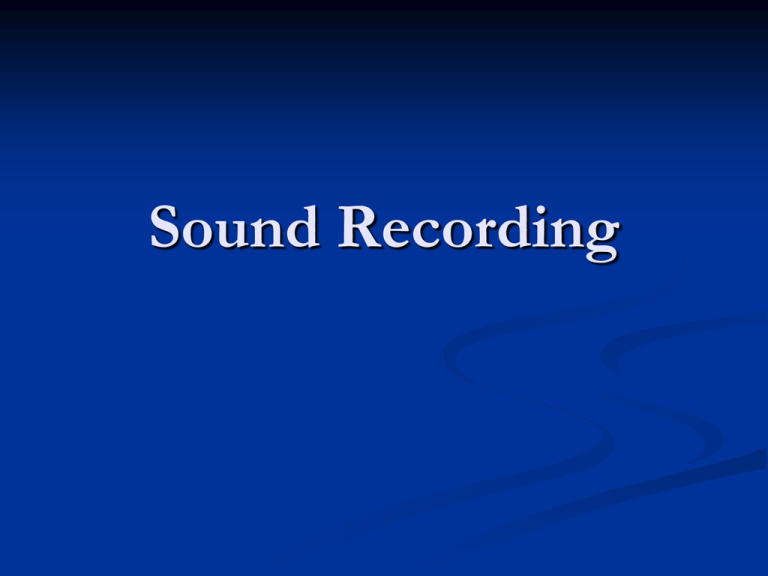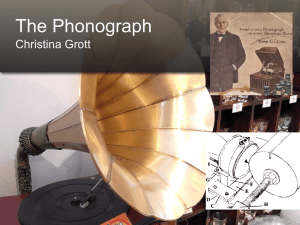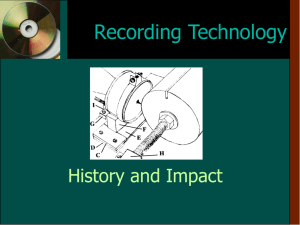History and Development of Sound Recording
advertisement

Sound Recording We need to backtrack a bit to understand sound recording Leon Scott de Martinville phonautograph - 1857 Attached a bristle to a membrane at the end of a cone, set the bristle to touch a piece of smoked glass Spoke into the cone membrane vibrated to the sound and the bristle etched a wavy line onto the smoked glass Spring of 2009 scientists were able to get sound from one of de Martinville’s paper phonautographs – a woman singing for 10 seconds Thomas Edison Tinfoil phonograph – 1877 Close-up on bumps Chichester Bell / Charles Tainter Bell and Tainter’s phonograph – 1885 Close-up Emile Berliner Berliner Gramophone – 1887 Eldridge Johnson / Gramophone “Little Nipper” Columbia’s Eagle Mechanical recording session Electrical Recording Valdemar Poulsen Telegraphone – 1897 Close up of telegraphone Telegraphone – 1915 Fritz Pfleumer Magnetic tape BASF/AEG Magnetophone – 1935 Carbon granule mic Condenser Microphone Ribbon mike Electrical recording session Cone speaker Siemans’ dynamic speaker Radiation speaker Orthophonic speaker Speaker construction Back to tape Reel to reel tape recorder – 1948 Cassette tape – 1963 Norelco CarryCorder – 1965 8 track tape – 1966 Sony Walkman – 1979 Digital Revolution Close up of record grooves CD pits











